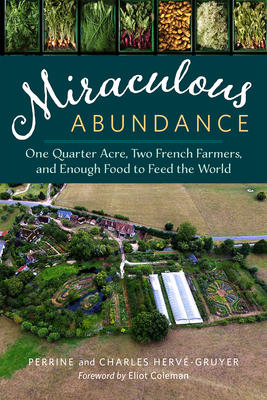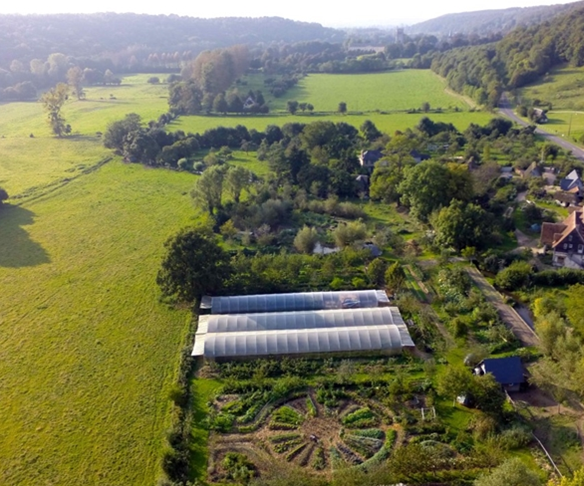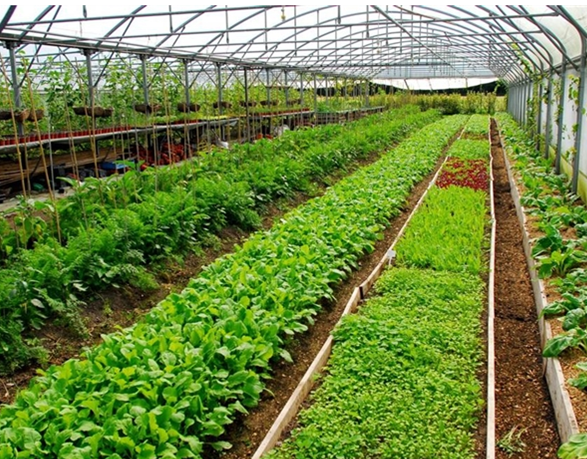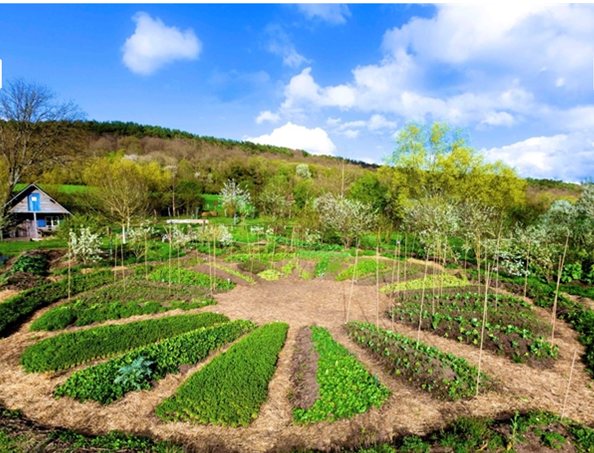
Written by Perrine & Charles Hervé-Gruyer with a foreword by Eliot Coleman, and published in March 2016. Book review by CFSA Member Don Stewart, a retired farmer, now gardener who lives in Pittsboro, North Carolina.
All small farmers and market gardeners should be interested in the new book Miraculous Abundance: One Quarter Acre, Two French Farmers, and Enough Food to Feed the World. The book is interesting enough to provoke a Foreword by Eliot Coleman, and blurbs by Joel Salatin, Novella Carpenter, John Jeavons, Eric Toensmeier, Joan Gussow, Carol Deppe, Gene Logsdon, Martin Crawford, Carolina Aitken of Patrick Whitefield Associates, and Larry Korn.

Gene Logsdon, who has been farming in Ohio for longer than most of us have been alive, says:
‘I don’t know when I have been more encouraged about the future…They are combining biointensive farming and permaculture to make a viable, diversified micro farm on test plots that are little more than two acres with the possibility of reducing that size down to as small as one fourth acre…They use hardly any fossil-fuel energy at all…solid evidence…to back up their conclusions…including more healthful food, food security for the coming population increases, more jobs, effective sequestration of CO2, and indeed a whole new world order that would insure better social stability out of the chaos we presently face.’

The history is that two French, middle-aged, city people found each other, married, and in October 2006 officially became farmers in rural Normandy. A few years later they were broke. So during the winter of 2007-2008 they began to read books about farming. They discovered the biointensive methods of John Jeavons and the design principles of permaculture. They began their aggressive rebuilding of the farm in the spring of 2008.
Just a few years later they were drawing attention. Eliot Coleman visited, as did Jean Martin Fortier from Quebec. Among those interested was Francois Leger, an agricultural scientist. The farmers, Perrine and Charles, proposed to Leger that they conduct a scientific study to see if farming a quarter acre (1000 square meters) of land could be financially and ecologically successful. The answers can be found here.
The answers you will find in the final report are suggested in the book, but were not all available when the book went to press. And the answer is that a quarter acre of actual beds can support a farm. The ecological assessments are also favorable. Biodiversity has increased. The land is worked with hand tools, and the soil is not turned annually. Crops are planted very densely, in the style of John Jeavons. They collect horse manure from a nearby riding stable. Some of the beds in the study are in greenhouses, while some are open to the sky. The parts of the farm which were not included in the quarter acre test plot are given over to fruits, berries, and nuts as well as pasture for their animals.
So what we have here is something that many people said was impossible – a quarter acre of beds which are generating enough money to support a farm financially while also building soil fertility and biodiversity.
If you are a veteran farmer, you will recognize some of the mistakes they made initially, such as expecting that they could sell their produce from a farm stand and the world would beat a path to their door. All in all, it is an incredible story of two people who really didn’t know very much about farming, but who learned incredibly quickly and worked very hard to make the farm successful. You will learn quite a lot of things by reading this book, and an additional volume with more detail is promised.The farmers lay out a vision of what agriculture can be like in a world with more people and less in the way of fossil fuel resources. They speak of Agrarian Solidarity, which consists of many small agrarian enterprises focused on a small piece of geography and partnering to achieve financial and ecological success…somewhat similar to Joel Salatin’s ideas about many different businesses using a land base for individual farm products and processed food.
The farm, Le Ferme du Bec Hellouin, is best summed up by Francois Leger in his summary of the scientific team’s findings:
- ‘small and well cared for is better than big and neglected’
- ‘From a scientific perspective…But I must be honest. My reasons are equally subjective. I like going to the Bec because it is rare and magical…’

Photo via http://www.fermedubec.com/






